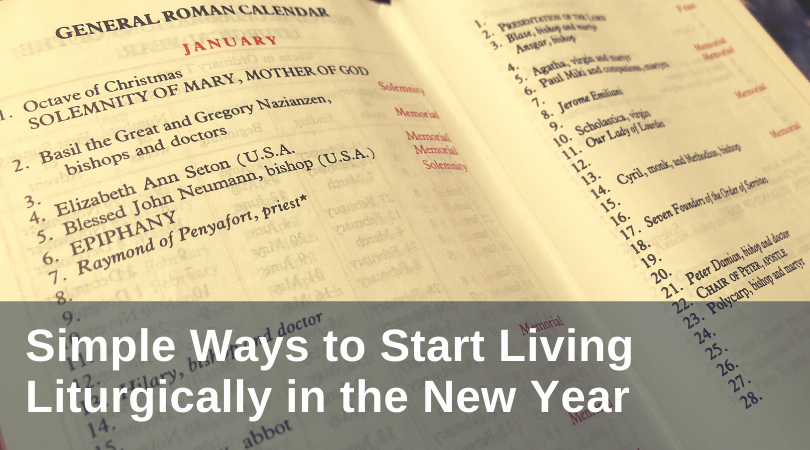
Since I began seeking to live liturgically—that is, to observe the Church’s calendar and traditions in daily life—I have found that even small acts have introduced a new richness and joy into the rhythm of my days. There is a simple pleasure in anticipating upcoming feast days and other liturgical occasions and observing them in ways either light-hearted or prayerful. In recent years, I have celebrated the Feast of the Archangels (September 29) by preparing angel hair pasta to share with a dear friend, and I baked a honey pound cake for my co-workers on the Memorial of the Passion of John the Baptist (August 29), the patron of my parish, who subsisted on locusts and wild honey in the desert (see Matthew 3:4). Marian feasts are always an occasion to dress in blue and wear a Miraculous Medal. The pleasure of brightening an otherwise monotonous week with such celebrations is accompanied, moreover, with the joy that comes from developing a deeper appreciation for the richness of Catholic tradition and entering more fully into the universality of the Church. Becoming more attuned to the feasts and seasons of the liturgical year has helped me to feel more united with Catholics across the globe and throughout the centuries.
Seeking to live liturgically has, too, augmented my prayer life. It has brought me to daily Mass, where I am united in Christ and the whole communion of saints by receiving the Eucharist. It has also been helpful in my ministry: I frequently lead prayers at meetings and in religious education classes, so I have many excuses to scour the internet, learning about saints remembered on a particular day, hunting down their own prayers and prayers for their intercession to offer with others. Sometimes, I adopt these prayers into my own spiritual life, which helps me develop relationships with particular saints, and thereby draw closer to Christ through them.
Relatedly, living liturgically has enhanced my ability to share the riches of the Catholic faith and tradition with my students. Many of them are fairly apathetic to faith, and some tend to see Catholicism as something archaic, with little relevance to their lives and these times. Sharing the truth and beauty of the liturgical seasons, though, can provide an inroad to sharing how deeply relevant and urgent the faith is today. Advent, for example, when shared in the fullness of its meaning, is not simply about commemorating something that happened two thousand years ago, but about anticipating the Second Coming and celebrating Christ’s continued presence here and now through the Church and the sacraments, especially the Eucharist. Additionally, the wealth of feast days dotting the Church’s calendar proffer opportunities to share with young people how God enters into the world even in our modern times, and how this encounter can transform their own lives.
Here are some suggestions for beginning to live liturgically:
- Find a good Catholic calendar that has the liturgical seasons and major feasts marked.
- Identify some occasions to observe. Who are your favorite saints? Be sure to mark their feasts in your calendar! Consider praying their novenas leading up to their feast and attending Mass that day, as well as planning a meal or activity inspired by the saint in some way.
- Choose simple ways to celebrate, like those described above.
- Follow Catholic social media pages that often post content about feast days. Seeing this kind of content in your feed will continually remind you to think liturgically.
- Share the good wishes! On special liturgical occasions, exchange a commonplace “Happy Monday!” for a “Happy Feast of St. Elizabeth Ann Seton!” Rather than wish your friends “Merry Christmas!” before December 25th, wish them “A blessed Advent season” instead. Offering such a greeting to a Catholic less familiar with the rhythms of the liturgical year could provide an opportunity to gently catechize them and draw them further into the beauty of the Church.
- Similarly, when sending handwritten correspondence, you might include the liturgical significance of any particular date below the regular date line. (For example: “Sunday, January 10 / The Baptism of the Lord,” or “Monday, January 11 / The First Monday in Ordinary Time.”)
Like what you read? Submit your email below to have our newest blogs delivered directly to your inbox each week.


